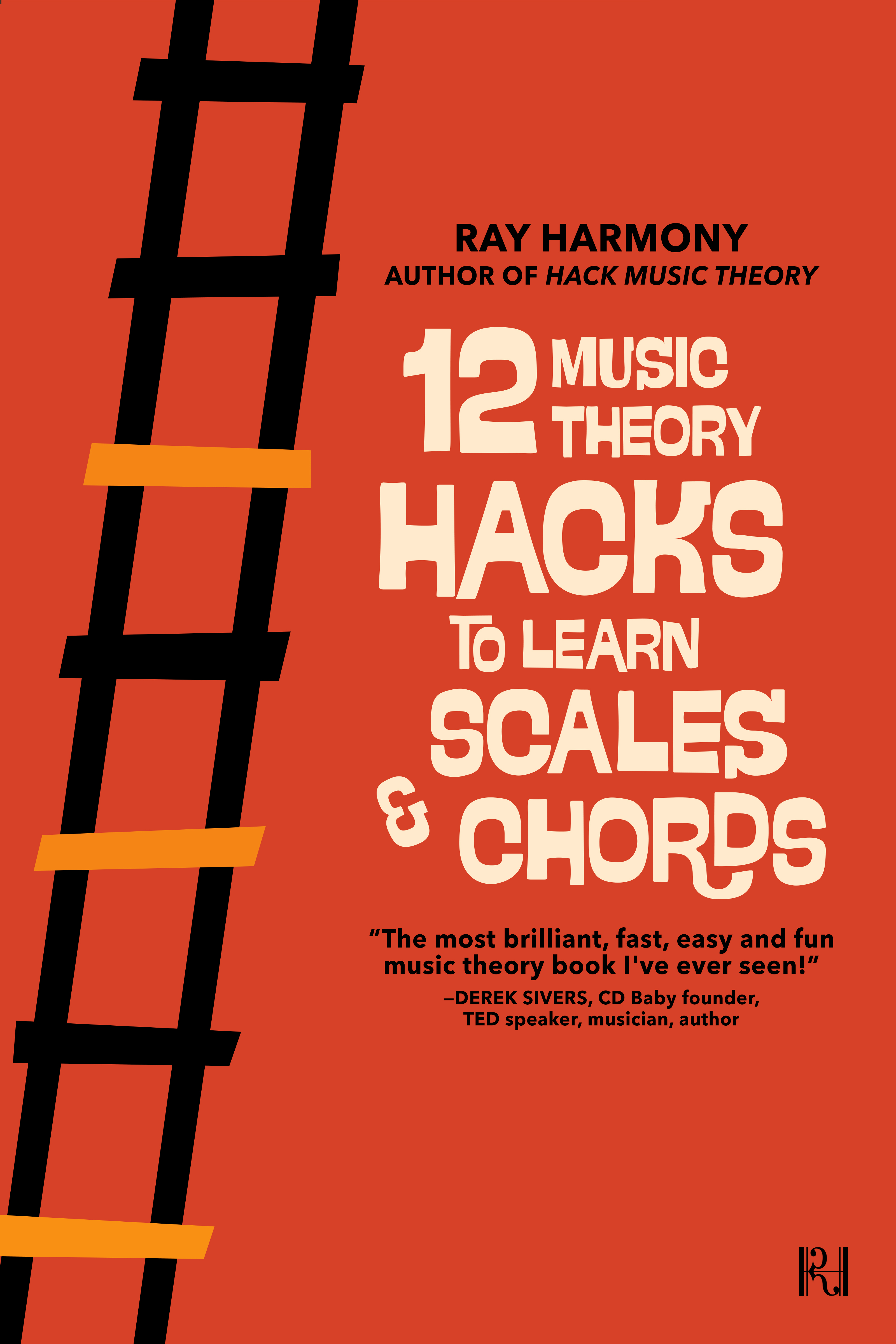Today on 3-Minute Theory: How to make a chord change flow smoothly when you don’t have a common note.
We’re in D Dorian, and using the white-note hack we previously wrote this chord progression: Dm → Am → Em → Gmaj. Last time we learnt that a common note (i.e. the same note in two different chords) is what gives you a strong and flowing chord change. But, the common note needs to be in the same place within both those chords. So for example, from Dm to Am, we can see that the common note is A, now we just need it in the same place, so we grab the two notes above A in Am (i.e. C and E) and move them down an octave. Now we’ve got the common note, A, at the top of both of these chords, and this chord change will now sound nice and smooth!
However, if we go back in time to when we were writing this chord progression, and say we didn’t like the Em chord (our third chord in this progression), and we wanted to go directly to the last chord, Gmaj. This gives us an Am to Gmaj chord change, and as you can see, these chords do not share a common note. This issue happens all the time, and it occurs for a couple of reasons. First, we’re using triads, which are three-note chords (the most basic type of chord, and therefore the most popular chord in popular music due to its simplicity), and whenever you’re using triads and you move to the next triad up or down, you won’t have a common note. All the notes of the triad you’re on will go into the gaps in between the notes of the adjacent triad. So while adjacent triads will never give you a common note, there’s a really cool hack to not only solve this issue, but to turn it into an interesting feature and often a motif too, which you can then use elsewhere. Here’s the hack:
We need to literally hack up the middle note of either of these chords, in order to connect them. The first option is to hack up the chord we’re coming from, by shortening the end of its middle note, and then going to the middle note of the next chord early, before the chord change (e.g. in Am, we shorten C and go down to B early). Not only does this give you a common note, but it actually makes something awesome out of that otherwise abrupt chord change. Figure 1: The middle note of Am (i.e. C) moves down to the middle note of Gmaj (i.e. B) before the chord change, creating a common note
Figure 1: The middle note of Am (i.e. C) moves down to the middle note of Gmaj (i.e. B) before the chord change, creating a common note
The second option is to hack up the chord we’re going to, by starting its middle note later, and extending the middle note of the chord we’re coming from into the new chord, before resolving it to the usual middle note (e.g. in Gmaj, we shorten B and start on C instead, before resolving to B). And once again, we not only get a common note and a strong chord change, but a nice motif too. Figure 2: The middle note of Am (i.e. C) extends into Gmaj, creating a common note, and then resolves to the usual middle note (i.e. B)
Figure 2: The middle note of Am (i.e. C) extends into Gmaj, creating a common note, and then resolves to the usual middle note (i.e. B)
One caveat for this hack, though. Always tweak the adjacent triads in your chord progressions first, before you start moving around the notes of the other chords. This is because you want to tweak the middle notes of your adjacent triads, but it’s difficult to know what the middle notes are, after you’ve started moving all the notes around.
If you want to go deeper into writing chord progressions using the modes, please check out my Hack Music Theory for Songwriting & Producing PDF. Until next time, happy songwriting!
Ray Harmony
Music Teacher
Victoria BC, Canada
 | |
Wooohooo!!! You're a mere 30 minutes away from being even smarter than you already are. Just head over to your inbox now for your free download.
